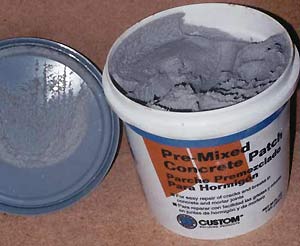Miliputty
apoxysculpt
https://www.avesstudio.com
Plumber Putty:
http://www.homedepot.com/b/Plumbing-Plumbing-Accessories-Pipe-Putty-Sealants/N-5yc1vZbuf1

I cannot say enough good things about this "ultimate" filler compound. You can find it in Hardware / DIY shops. It's easy to use- just open up the tub, scoop some out on a finger tip or flat stick, and spread it on ANY clean, dry surface and it will stick. Dabbing it will produce a ripple effect and ensure a better bond. Good uses for concrete patch include:
- GLUE!!! You can actually glue stuff together with concrete patch! It sticks to plastic (if sanded), wood, stone, cardboard, porcelain, foam... everything but metal (even then if you sand it enough). It's best for gluing large, uneven objects (like if you want to glue rocks down to a base). It's not a replacement for superglue (don't use it for miniatures!), but it's really handy when making natural terrain.
- Filling Gaps. Especially when working on natural terrain (stone structures, dirt trenches, etc.), just mash some into the gaps. For a cleaner finish, just wipe away the excess with a damp cloth. Great for blending together castle pieces, basing up trees or trenches, or blending rubble together.
- Adding Texture. Goodbye textured paint, hello concrete patch! This stuff sticks to nearly everything- even porcelain! Just dab / stipple it on to add a grainy texture that, when dry, will not crumble or flake away. You can even texture bases with it! Once cured, you can rub off any loose grains before painting, but you'll be surprised how much stays on.
- Building Up. Use it to represent rubble, dirt, or any other grainy surface. You can build it up in layers (caution: it can get heavy) or use it to coat over a basic shape (built up with foam, cardboard, wood, etc). Either way, your built up surface is sure to be strong- much stronger than styrofoam or even plaster.
No comments:
Post a Comment